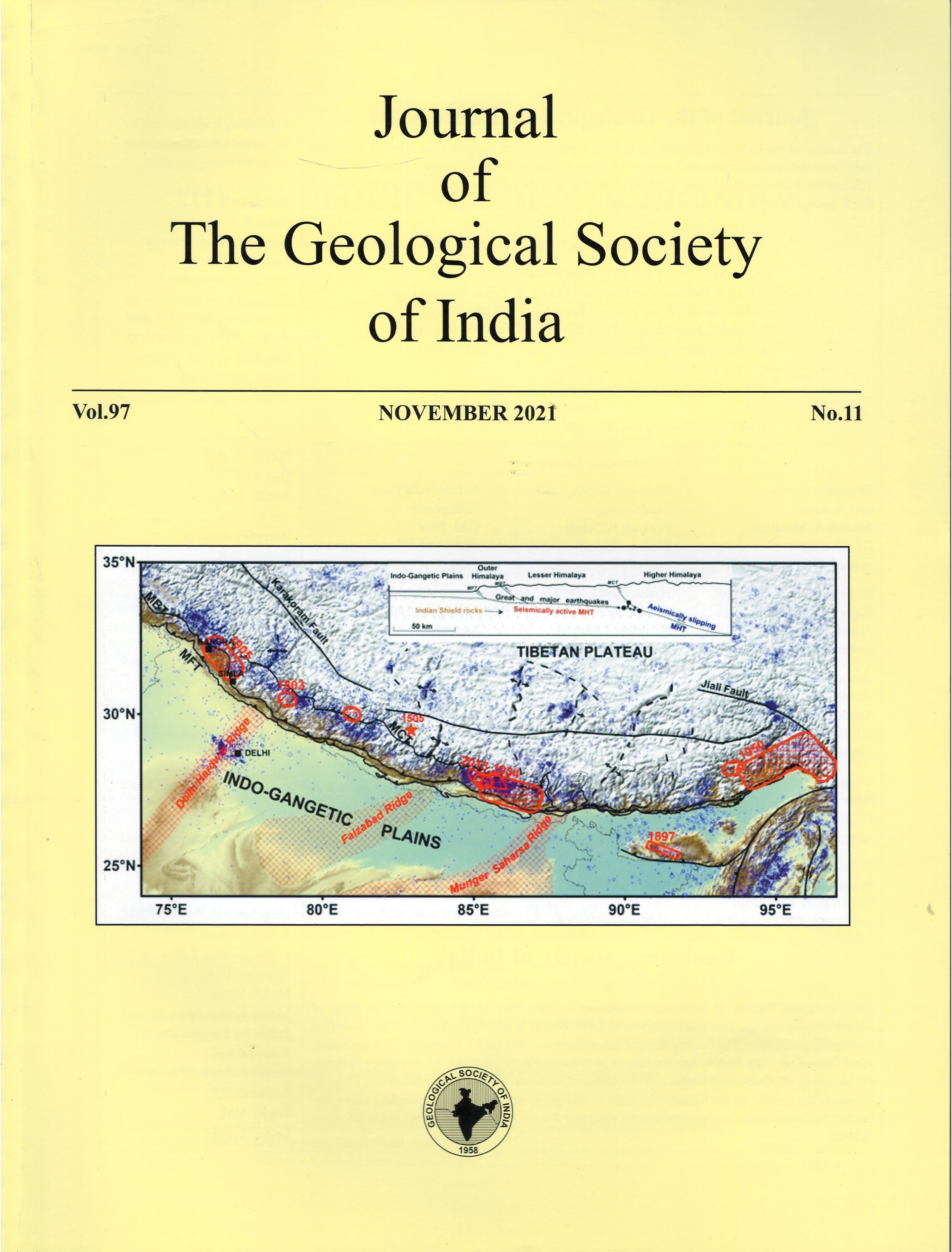Mineral Chemistry and Geothermobarometry of Amphibolite-Granulite Facies Basement Rocks Concealed Below Deccan Volcanic Covered 1993 Killari Earthquake Region, Maharashtra, India
DOI:
https://doi.org/10.1007/s12594-021-1871-3Keywords:
No keywords.Abstract
A detailed mineral chemistry and geothermobarometry of the Deccan volcanic covered Neoarchean crystalline basement rocks is presented, pierced by KLR-1 borehole, drilled in the Killari region of Maharashtra, which was a site of major earthquake disaster in 1993, killing almost 10,000 people. The present study provides unequivocal evidence that the entire drilled basement is mainly made up of tonalite/granodiorite and amphibolite/granulite. They contain hornblende, clinopyroxene, plagioclase, biotites and minor orthopyroxene, apart from accessories like ilmenite, magnetite, pyrite, titanite, zoisite, clinozoisite and epidote. Compositionally, amphibole conform to ferropargasite, magnesiohastingsite, ferro-edenite and edenite. Similarly, the clinopyroxenes correspond to diopside and orthopyroxenes to clino-enstatite. Further, biotites are found to be magnesium and iron-rich, while feldspars correspond mainly to albite and orthoclase. Bulk rock chemistry and mineral chemistry of amphibole and biotites indicate calc-alkaline nature of the rock associated with high oxygen fugacity, that may have been formed in subduction zone related environments as evidenced by geochemical data and tectonic discrimination diagrams. Geothermobarometric studies carried out on amphibolite and granulite, indicate that the underlying basement was subjected to metamorphic temperatures between 540 and 860°C and pressure, 5 to 7 kb, corresponding to 15-21 km depth. Petrographically, these rocks appear deformed, retrogressed and metasomatized by halogen-rich mantle-derived CO2 and brought to the surface by continued geodynamic process of uplift and erosion, even before the onset of Deccan volcanism.

 Priyanka Tripathi
Priyanka Tripathi






